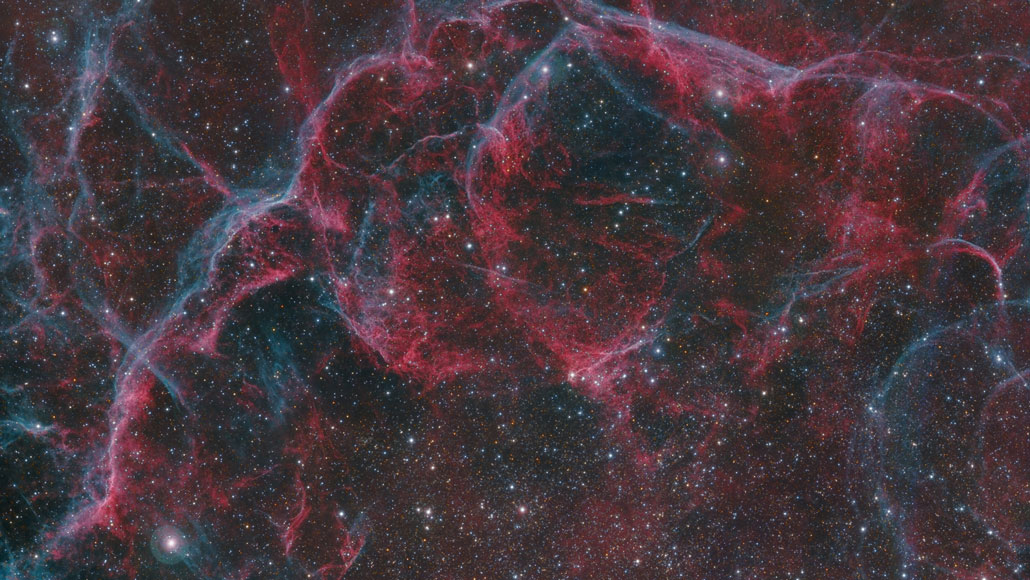Iron from outside the solar system has sprinkled down on Antarctica in recent years. Measurements of half a ton of snow turned up intersteller iron deposited within the last two decades, scientists report in a study accepted in Physical Review Letters. That iron comes from the explosions of massive stars, or supernovas, the team says.
Iron from outside the solar system has sprinkled down on Antarctica in recent years. Measurements of half a ton of snow turned up intersteller iron deposited within the last two decades, scientists report in a study accepted in Physical Review Letters. That iron comes from the explosions of massive stars, or supernovas, the team says.Iron from outside the solar system has sprinkled down on Antarctica in recent years. Measurements of half a ton of snow turned up intersteller iron deposited within the last two decades, scientists report in a study accepted in Physical Review Letters. That iron comes from the explosions of massive stars, or supernovas, the team says.
 |
| The image of Supernova Snowfall |
Iron from outside the solar system has sprinkled down on Antarctica in recent years. Measurements of half a ton of snow turned up intersteller iron deposited within the last two decades, scientists report in a study accepted in Physical Review Letters. That iron comes from the explosions of massive stars, or supernovas, the team says.
Iron from outside the solar system has sprinkled down on Antarctica in recent years. Measurements of half a ton of snow turned up intersteller iron deposited within the last two decades, scientists report in a study accepted in Physical Review Letters. That iron comes from the explosions of massive stars, or supernovas, the team says.Iron from outside the solar system has sprinkled down on Antarctica in recent years. Measurements of half a ton of snow turned up intersteller iron deposited within the last two decades, scientists report in a study accepted in Physical Review Letters. That iron comes from the explosions of massive stars, or supernovas, the team says.Iron from outside the solar system has sprinkled down on Antarctica in recent years. Measurements of half a ton of snow turned up intersteller iron deposited within the last two decades, scientists report in a study accepted in Physical Review Letters. That iron comes from the explosions of massive stars, or supernovas, the team says.Iron from outside the solar system has sprinkled down on Antarctica in recent years. Measurements of half a ton of snow turned up intersteller iron deposited within the last two decades, scientists report in a study accepted in Physical Review Letters. That iron comes from the explosions of massive stars, or supernovas, the team says.Iron from outside the solar system has sprinkled down on Antarctica in recent years. Measurements of half a ton of snow turned up intersteller iron deposited within the last two decades, scientists report in a study accepted in Physical Review Letters. That iron comes from the explosions of massive stars, or supernovas, the team says.
Iron from outside the solar system has sprinkled down on Antarctica in recent years. Measurements of half a ton of snow turned up intersteller iron deposited within the last two decades, scientists report in a study accepted in Physical Review Letters. That iron comes from the explosions of massive stars, or supernovas, the team says.
Iron from outside the solar system has sprinkled down on Antarctica in recent years. Measurements of half a ton of snow turned up intersteller iron deposited within the last two decades, scientists report in a study accepted in Physical Review Letters. That iron comes from the explosions of massive stars, or supernovas, the team says.



0 Comments